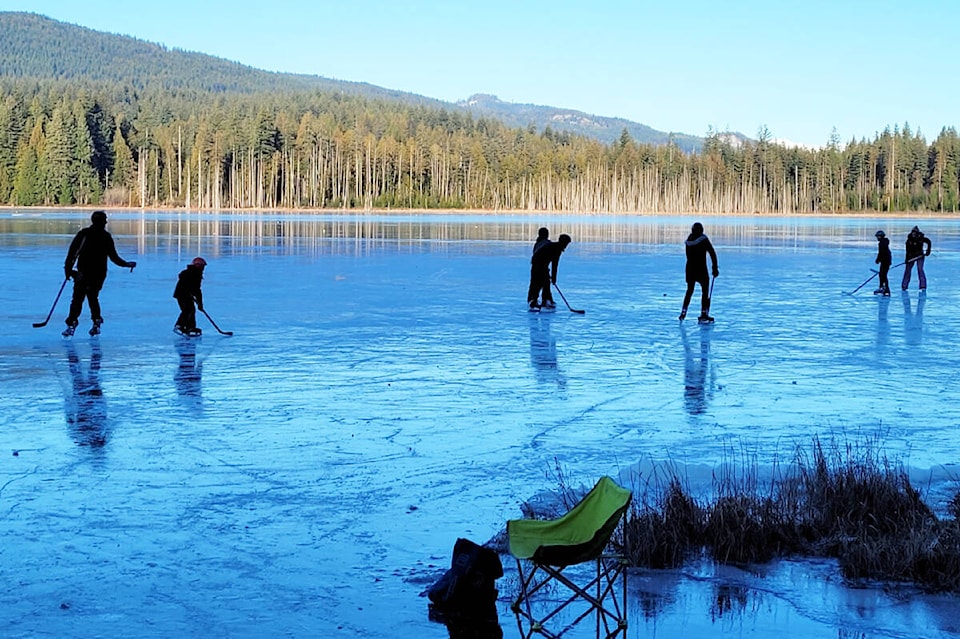A teenager’s fall through the ice on Cumberland’s Maple Lake is serving as a reminder on how to play it safe during a winter cold snap.
Cumberland’s Deputy Fire Chief Stephane Dionne said he received a call at around 3 p.m on Sunday to respond to Maple Lake. When Dionne arrived at the scene, a teenager had crawled out of the lake already, having fallen into five-feet deep water, five feet away from the shore, said Dionne.
Black Press Media reached out to Comox Valley Ground Search and Rescue to learn about the risks involved with going out on frozen lakes.
“Someone can drown almost instantly,” said public information officer Paul Berry, who has 25 years of experience in search and rescue. “They fall through the ice and they hit the cold water and there is an immediate bodily response… they do that (gasp).
“And that is often the last breath they take.”
If someone falls through the ice, the best thing to do is fight their initial reaction, said Berry.
“It’s important that they can get themselves calm, and do so as quickly as they can within about 10 seconds. Calm their breathing.”
After that, comes tactics to get to safety.
“Work to try and get themselves out of the water by putting their arms out, stretched in front of them over the ice, kicking as hard as they can to get on to the ice,” said Berry. “And then not standing up, but rolling. So they’re distributing their weight and trying to get to shore that way.”
People who fall into freezing-cold water have about 10 minutes of purposeful movement, according to the search and rescue expert. After that, “muscles are so cold and so cramped that you’re not able to continue to move.”
These situations can be avoided by surveying ice before venturing out.
To avoid unsafe conditions, Berry said there are a few things to look out for about frozen bodies of water. Ice that is white indicates more risk of breaking than blue or black ice, Berry said. Also, a current flowing under the water is a bad sign, and Berry said no one should venture onto ice that is under four inches in thickness. Reports estimate the ice was approximately one inch thick in the Maple Lake incident.
He believes most people escape water on their own. In the Comox Valley, the search and rescue group received calls about roughly four incidents in the past six years.
NEWSLETTER: Sign up to get our news by email
